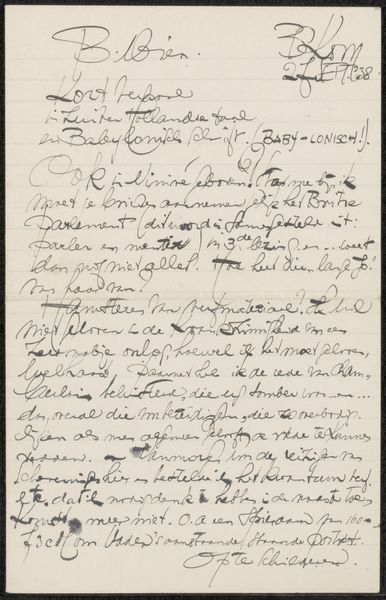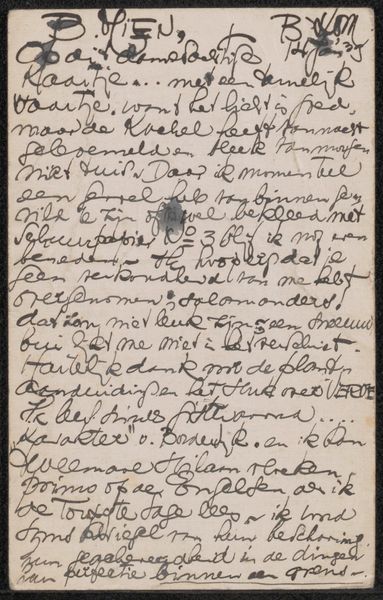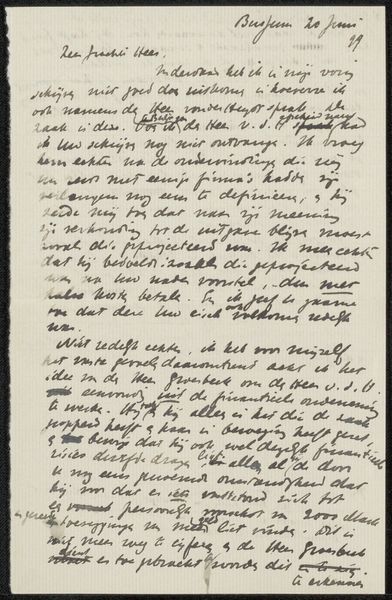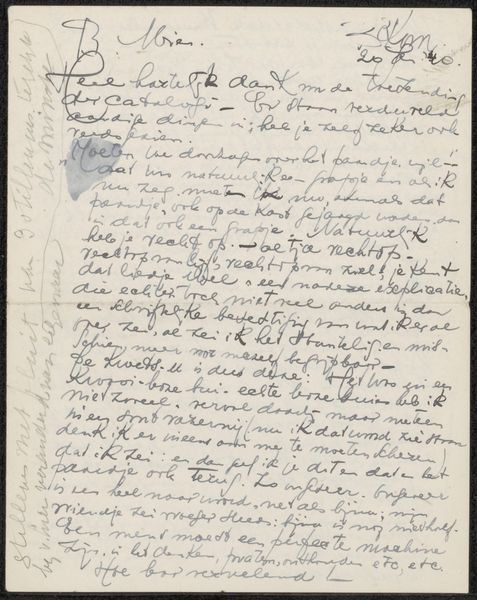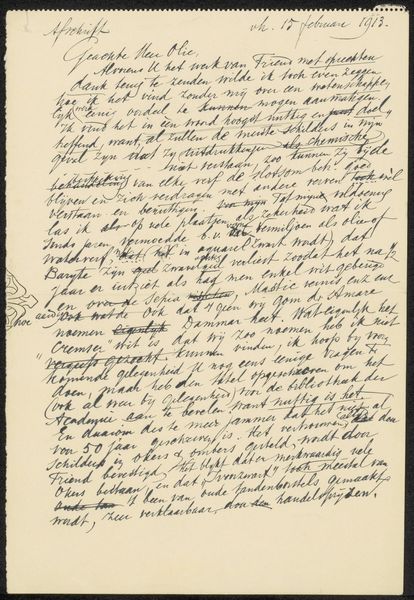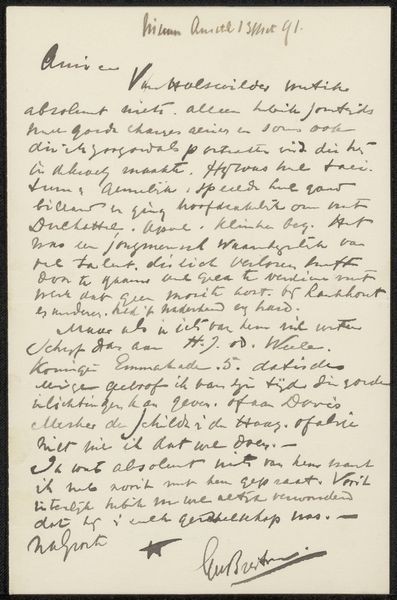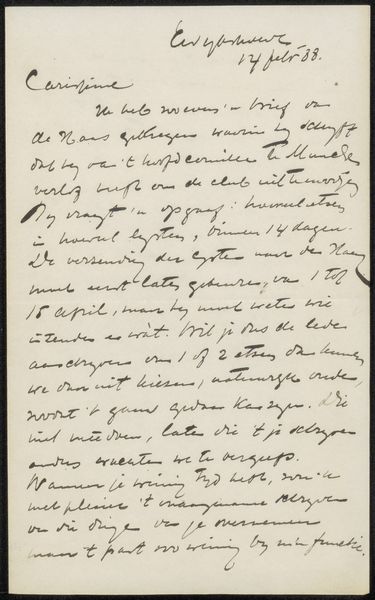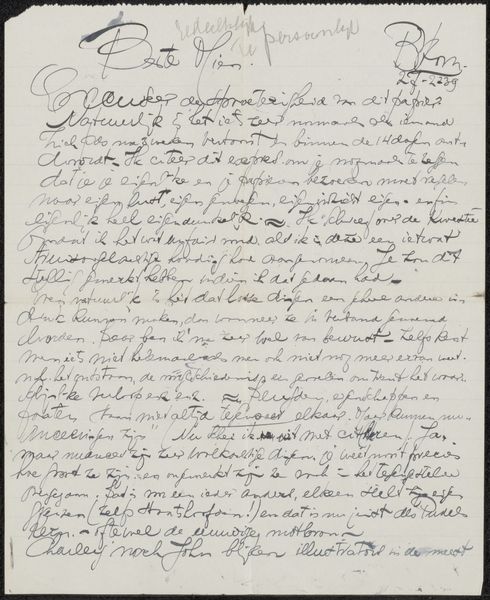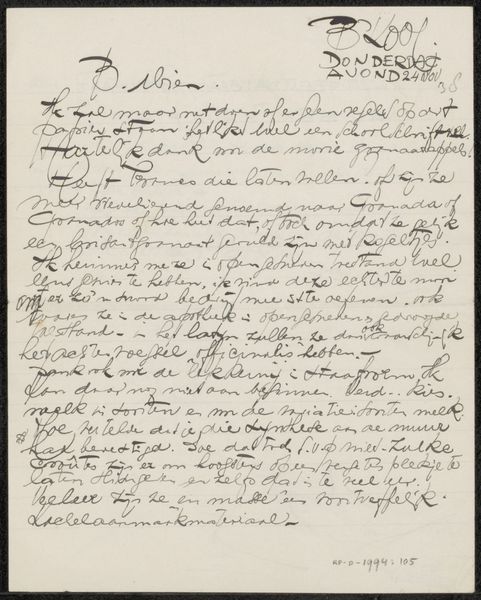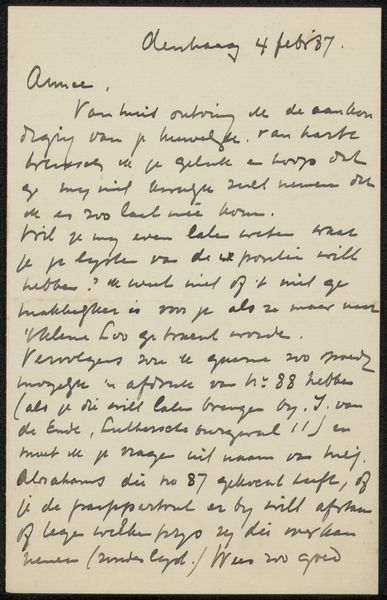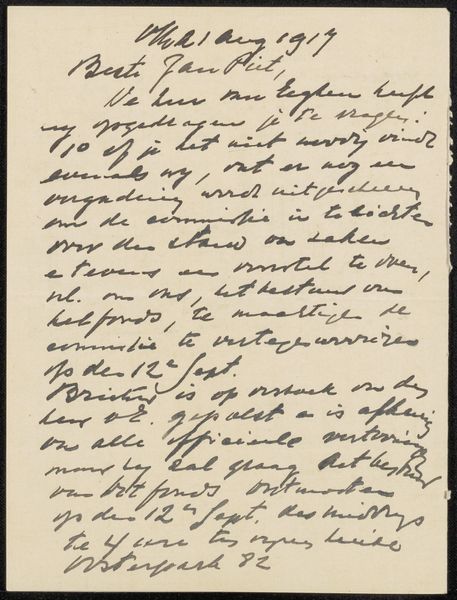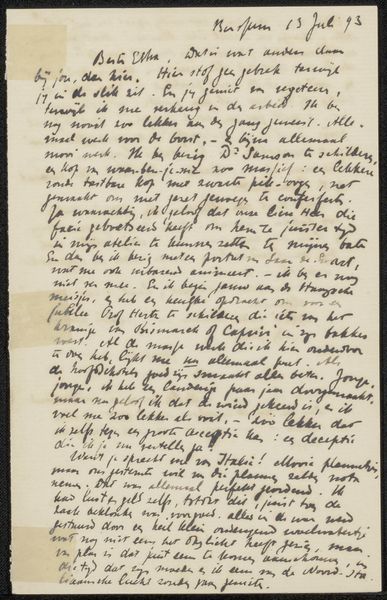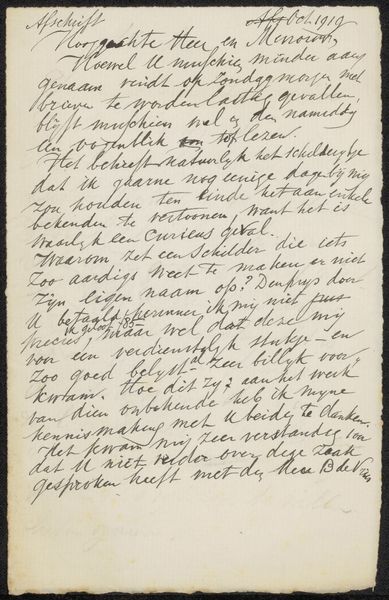
drawing, mixed-media, paper, ink, pen
#
drawing
#
mixed-media
#
hand-lettering
#
pen drawing
#
hand drawn type
#
hand lettering
#
paper
#
personal sketchbook
#
ink
#
hand-drawn typeface
#
pen-ink sketch
#
pen work
#
sketchbook drawing
#
pen
#
sketchbook art
Copyright: Rijks Museum: Open Domain
Editor: This piece is titled "Brief aan Mien Cambier van Nooten" by Dick Ket, potentially from 1938. It seems to be a mixed-media drawing, mostly pen and ink on paper. My first thought is, wow, it's literally a handwritten letter elevated to the level of art. It’s almost illegible to me! How do you interpret this work? Curator: What strikes me is the intimate connection this piece creates, or perhaps tries to create, between Ket and the recipient. Letters were once vital for communication. What was the social position of Mien Cambier van Nooten and Ket at the time the letter was penned? Did their social circumstances impact the communication? Editor: That’s interesting. I don't know much about either of them, to be honest. So you're saying the act of writing itself and the context surrounding it gives the letter its power, perhaps even more than the words themselves? Curator: Precisely. Ket uses the conventions of letter writing - a date, a salutation, closing remarks. But what kind of message is he communicating to Mien by presenting what is an ostensibly difficult text to read. Was Ket aware of this issue? How does it function as an art object in public institution today? Editor: Hmm, good point. The gesture is as important, or maybe more so, than the message. So maybe the public display re-contextualizes the work completely? It’s like we’re eavesdropping, and the power dynamic has shifted. Curator: Precisely, our gaze, facilitated by the institution, creates a whole new layer of interpretation. Understanding these shifts helps us to appreciate the social life of the object. Editor: That's really fascinating. I hadn't considered that layers of social context would be so important for such an intimate work. Curator: It is vital that the social context should be front of our thinking, particularly in museums. Thanks, that’s given me something to consider more fully in my next show!
Comments
No comments
Be the first to comment and join the conversation on the ultimate creative platform.
